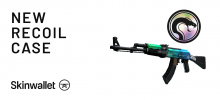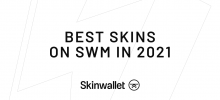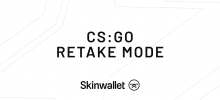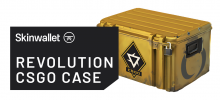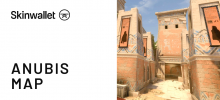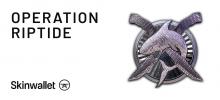Outlining CSGO Marketplace Economy
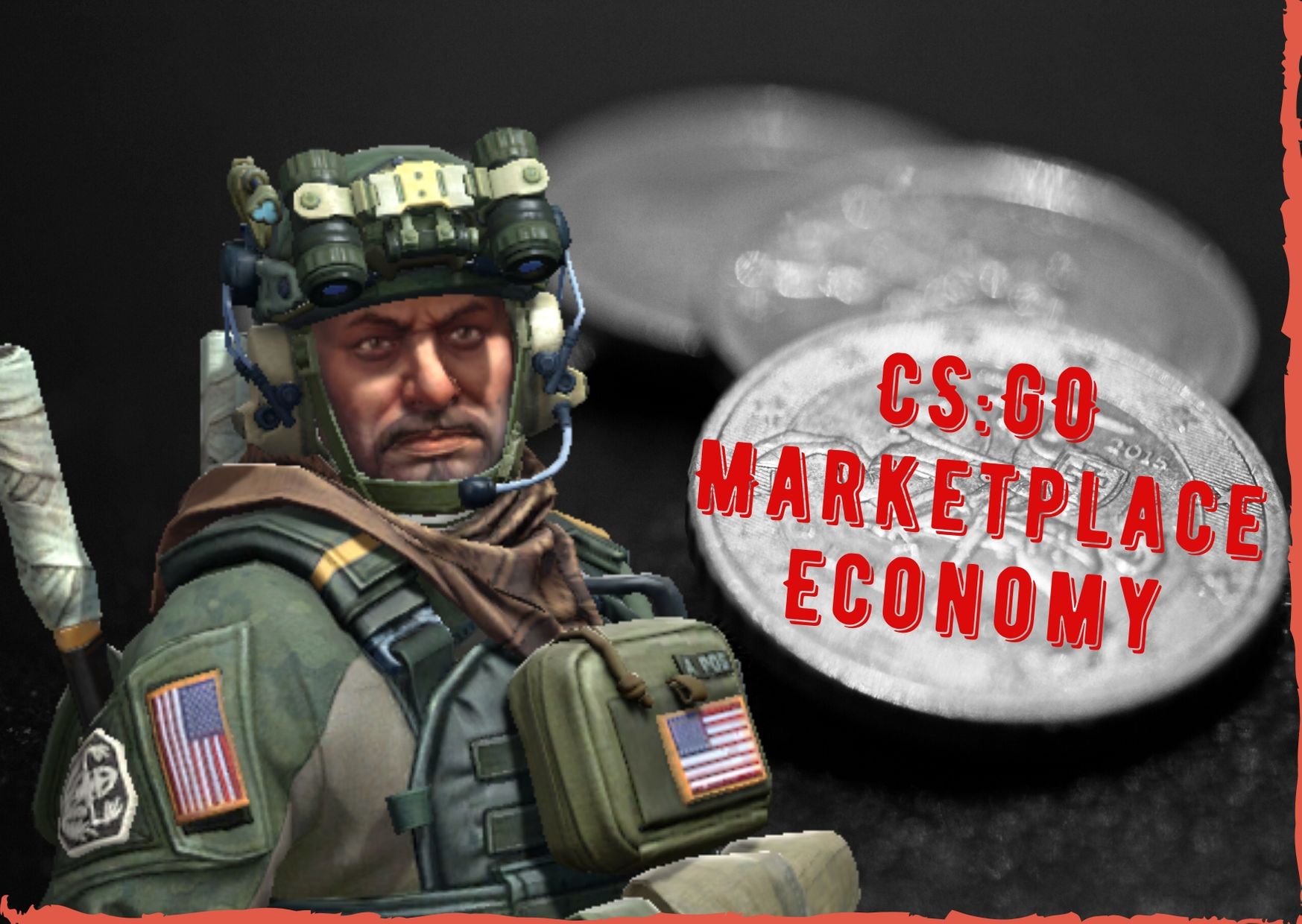
It’s easy to accidentally underestimate the impact of the tradable in-game items on the popularity and the financial reality of the game. At first sight, it may seem that the ability to sell and buy cosmetic (and sometimes functional, but not in CSGO) items, that drop during playtime, is just a peripheral add-on to the game. However, the fact that they come in different variety and rarity puts them in a whole hierarchy of value. Additionally, droppable cases are opened with buyable keys, which make an extra profit for the publisher. On top of that, third-party entrepreneurs have also found a way to capitalise the services that help deal with the trade within and around Steam. These are all bricks and segments that have built up to be a whole CSGO Marketplace economy we are witnessing today.
Even if you’re not a financial mastermind and you’re not plotting to make millions out of CSGO skins, it’s good to know your ins-and-outs of marketplace economy for several reasons. One is that you don’t get a super-sad surprise of your most precious skins suddenly losing value without you noticing. The other is that you can construct a plan of obtaining and selling further items that are currently valued highly on the market instead of crossing your fingers and counting on luck every time you want to sell something. Other than that, it prevents you from being scammed into giving away items which could have some value all along.
This article will try to run you through the basic assumptions about CSGO Marketplace economy and introduce into the current state of third-party marketplaces.
How does CSGO Marketplace economy work?
The absolute basic factor of skin economy are the skins themselves. For the sake of clarity we’ll narrow the parameters of skins down to being diversified in terms of rarity, quality/wear and additional features. Those can influence the price on two conditions. For the purpose of learning we’ll call them hard factors and soft factors.
Hard factors of CSGO marketplaces economy are those which truly depend on numbers more than anything else and are a basis of determining a skin worth. The less often a skin drops, the more valuable it is. The lower its float is, the higher the quality of the skin, so the bigger the price. Also, a visually similar variant of a skin can be more often looted from cases than dropped after matches, which will also influence its value. This all is the reason that knives and gloves, which barely ever drop, are the most desirable items in terms of value. Also, as StatTrak versions of weapons drop less often, they are automatically perceived as more expensive, and you’ll barely see a StatTrak version as cheap as the regular one. Same goes with Souvenir versions, which are only dropped during major CSGO events.
Soft factors are less objective. In this can be the popularity of the weapon to which the skin is dedicated, or the aesthetic all-around opinion which can sometimes overturn the float value expectations, making “worse” items more appreciated by the players. Also, sticker theoretically also come in terms of rarity of drop, but some turn out to be extremely desirable, others not so much. Some combinations of skins with exact stickers will hit that individual bullseye and may rise a skin’s price significantly.
The drop rates also are a square one for the market volume of items, but will mostly not translate 1-to-1. There might be items which are uncommon drops, yet they will not be a welcome stay in players’ inventories. Therefore, they will be more often pushed out to the market. The bigger the volume, the lesser the desirability.
If you wish to further your technical knowledge on what else might influence the economy of CSGO Marketplace services, you’d have to develop some skills in maths in general, dig in deeper with the mechanics of each website you’re concerned with and try to learn the dynamics of commodity markets. It’s obviously too much of a hassle for casual traders, but certain individuals might want to treat it seriously. Either way, let’s look at several examples of marketplaces to start forming a bigger picture.
Best CSGO Marketplaces under current economy
Those days, the CSGO market options are many, and each one of them is doing their best to look professional. Just a glimpse at the UI is not enough to judge their adequacy. Here are several which we find reputable.
Dmarket
Probably the most confident player in this class of third-party websites. It is praised for good prices and a great market span with volumes of items. Sometimes, the possibility of choice is the deciding factor.
Opskins
Even if not a pioneer or an innovator, OPskins is praised for it’s extra-fast service and ease of use. While they had their platforming issues and not everyone was happy with the way they handled user’s funds in the transfer, it’s still one of the go-to marketplaces for both professional traders and casual clients.
Bitskins
For some time, Bitskins was the site that set the trends for others to follow. It still boasts fast service and efficient payouts, especially if you’re comfortable dealing with BitCoins.
Skinbay
Skinbay found a way to buy itself into the favor of players, as including a link to their website in user’s Steam displayed name lowered the market fee to only 5%. Beside these aggressive tactics, Skinbay is a transparent and easy to use market.
Where’s Skinwallet in all of this economy?
We’re not here to flex, but as Skinwallet started out as a mass-deposit and multi-platform payment method, its team is experienced in dealing with big volumes of skins. While a cash-out option is for those who are willing to sacrifice a little bit of skin worth for the sake of getting real money, the Skinwallet Market is here to offer you best deals for desirable skins in a transparent user interface. Skinwallet is constantly improving its service to provide the best trading experience.
Is the economic importance of those markets measureable?
Depending on what you’re aiming at, different marketplaces might suit your needs better. If you’re looking for specific items that are catalogued in different marketplaces it’s a good idea to compare the prices and see what they depend on. For example, in some cases a 0.01 difference in float can do all the difference for those bent on getting the best wear possible. To traders’ advantage, there are online tools dedicated to comparing prices from different marketplaces, so it saves you some research on CS GO marketplaces economy. One such site is SteamAnalyst, which will display average prices of listings for Bitskins, CS.Money, Skinbay, Dmarket, SkinBaron and original Steam Market simultaneously.
What are the benefits of CSGO Marketplace Economy?
One could safely say that providing a safe and measurable platform for item trade is the best benefit of CSGO economy. While other types of milestones in games, like levels, achievements and challenges provide more of a meta-satisfaction from playing the game, skins that drop and can be used for financial gain or as a trade token further expand the pleasure and gain that come with playing CSGO.
Summary
Overall, the economy of CSGO market is not an isolated bubble and might be dependent on looming external factors. In this article, we put together the most important variables, which this market is grounded in, and gave solid examples of marketplaces with their strongest traits. The article is not only a starting point for learning more about item trade economy in a broader sense, but also could be treated as an overview that serves your everyday trade. If you’d like Skinwallet to explain in more detail about the nuances of CSGO economy, let us know in the comments. Otherwise, hope you’ve learned something useful today to help you deal on the CSGO market.





 (8 votes, average: 4.38 out of 5)
(8 votes, average: 4.38 out of 5)